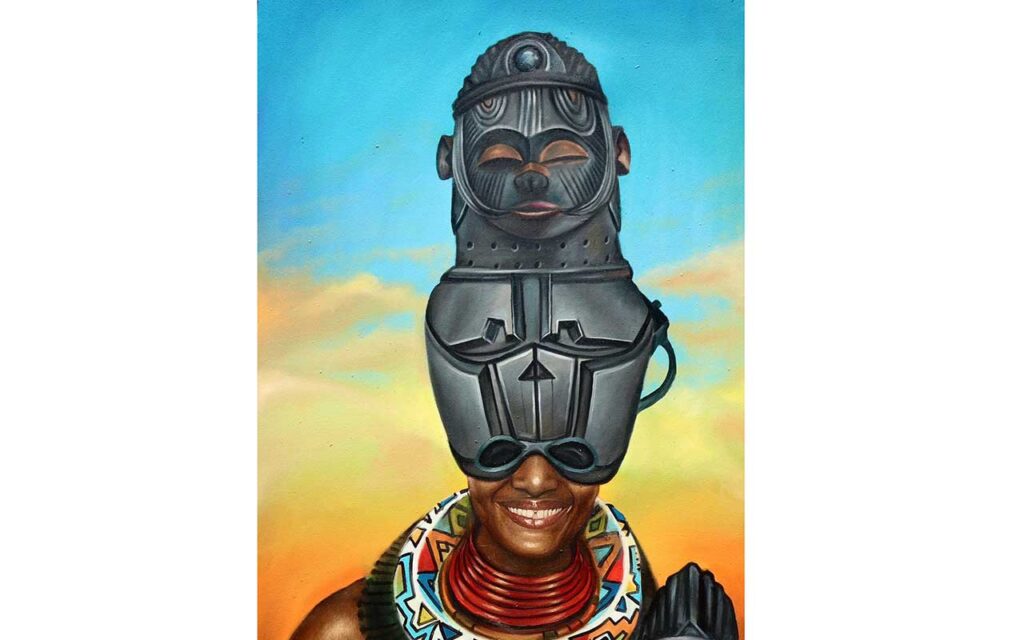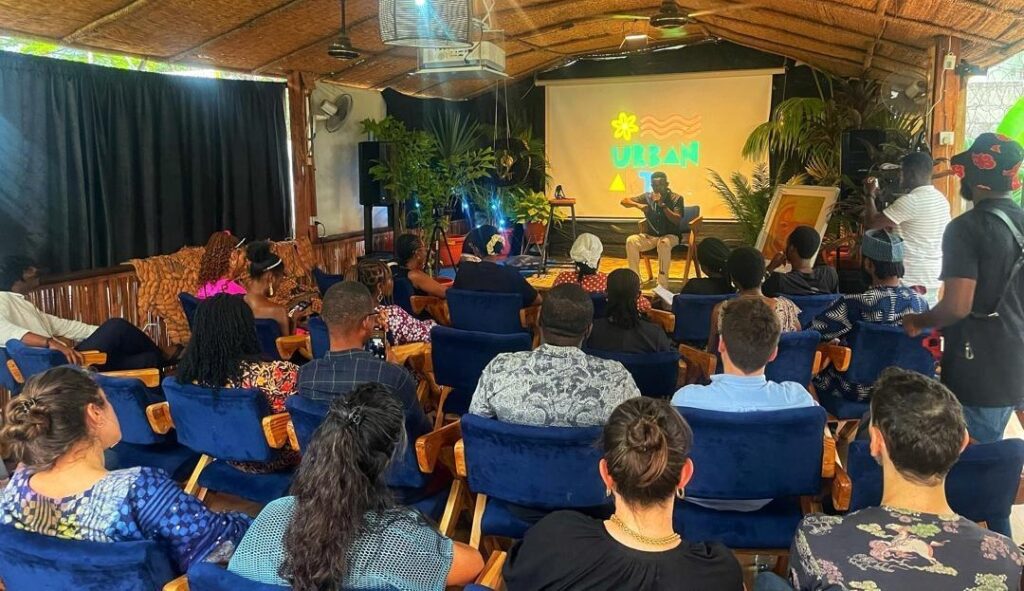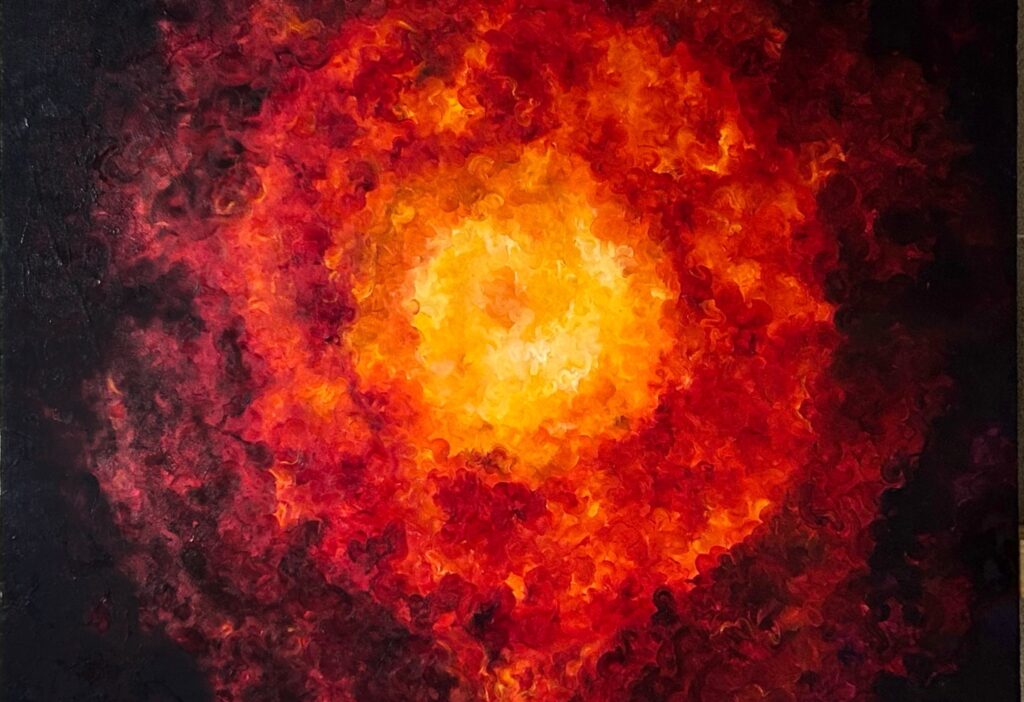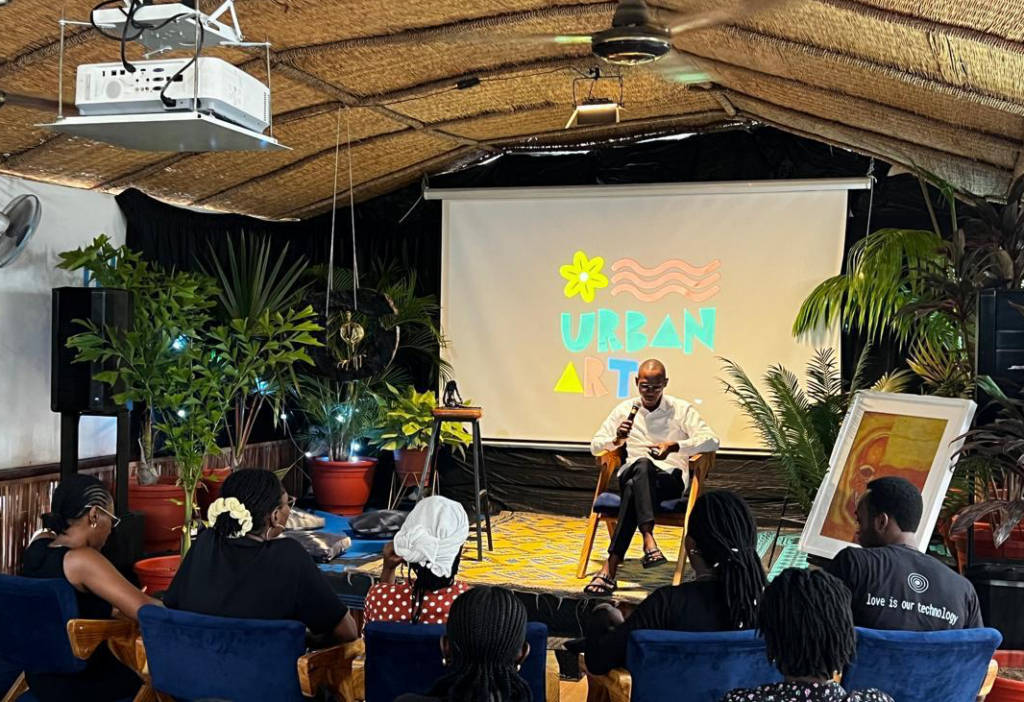 Nestled in the cracks of Miliken Hill, Enugu, popularly known as the Coal City, is now a City of Creativity and Culture.
Nestled in the cracks of Miliken Hill, Enugu, popularly known as the Coal City, is now a City of Creativity and Culture.
Aside from sculptures dotting the streets, it is an all-encompassing art landscape. Though, there are a few impressive alternative art spaces in Enugu, which co-exist alongside the established galleries — Some situated in storefronts, loft apartments or abandoned buildings— these spaces, usually run on shoestring budgets by young and ambitious curators, gallerists and artists, who want to prove that grassroots art scene can never be dead.
With a steadied promotion of visual art, the city has developed a new repertoire of images that is both akin to Onitsha Market Literature, but of a higher taste and standard that is not a caricature and denigration of the true subject matter.
Recently, more than a hundred artists from across the country exhibited their work at the Institute of Management and Technology’s Conference Centre in what has become a youth empowerment programme.
In their youthfulness, they deployed eclectic messages, themes and motifs. They include works using materials that have become hallmarks of the continent’s contemporary art.
At the event, Samson Ejiofor’s entry, Cold mineral, cold pure water (an installation), beat 24 other entries that made the final shortlist for the contest, which attracted an initial 270 entries from across eight zones of the country. This is, however, lower than the average entry of 400 recorded each year in past years and it is due to the eight-month ASUU strike. The universities and Polytechnics are the hubs of activity that feed the competition since its inception.
Reacting to his victory, Ejiofor said his participation in the 2022 Dak’Art Biennale in Senegal, courtesy of LIMCAF, broadened his horizon, particularly, on emerging trends in the art.
The Enugu-based wood sculptor said: “I can now go ahead and explore and grow in my art. This is the base.”
Established in 2007, Life in My City Art Festival (LIMCAF), a yearly celebration of creativity featuring young talents in Nigerian art landscape, was registered as a Trusteeship in 2012, under the name Life In My City Art Initiative, it features visual art competition, photography contest, multimedia workshop as well as school children’s and art teachers’ workshops.
A non-profit yearly competitive event in the visual arts, it encourages and empowers young Nigerian artists under the age of 35 years.
It is organised by a Board of Trustees headed by Elder K. U. Kalu CON with His Royal Majesty, Nnaemeka Achebe, OFR, Obi of Onitsha and Emeritus Professor El Anatsui as its patrons.
From being bankrolled during its first four years by Chief Robert Orji’s advertising and printing firm, Rocana Nigeria Limited, the festival has come of age.
Despite its obvious challenges, it has remained resilient and consistent in the empowerment of young Nigerian artists. From arts and crafts to theatre, music to photography, a number of impressive initiatives across the country are now used to empower youths. Whether it is through training workshops or exhibitions as well as the performative art, several projects are giving them a voice. These projects are geared towards transforming living condition, as well as their cultural expressions.
Under the direction of Kevin Ejiofor and Dr. Ayo Adewunmi, the initiative has contributed to art education in the country through its yearly school children workshop, which engages young professionals and school children in creativity. It has also become something that has a huge potential and benefit for Nigeria and the Nigerian youth.
According to initiators of the project, their mission is to position art for social development through youth empowerment, thereby, promoting art as a resource for national development.
LIMCAF has, in the past 15 years, empowered over 1500 young artistes and promoted art pan-Nigeria through the yearly competition that offers young people an avenue to showcase and commercialise their productions. Over N3 million are won in prizes every year.
“It has involved young people in a national interactive visual art fiesta in various centres across the country, which enables them to meaningfully express themselves on the state of their lived environment through their art and created a notable national and international art tournament destination in Enugu to complement other existing events and attractions in other parts of the country,” Adewunmi told The Guardian.
Adewunmi stated, “the idea is to keep sustaining their interest in art and also to fill the gap created by inadequate art teachers in secondary school.”
He said, “with the prizes that have been won, a number of the young people have used the platform to launch themselves into the limelight, either through being helped to finish their education to graduate levels, establishing their own businesses, as well as being encouraged to aim higher to win recognition in line here in Nigeria and beyond our shores.”
It is an exhibition of visual arts, and as an art space, has enhanced social interaction and engagement and generating economic revitalisation.
The event, no doubt, has been a response to how visual art can direct and change the fortune of the younger generation begging for direction and space to be human in the age of economic dislocation. Its role as a public space has also aided community development potential.
Through a good programming and other activities related to its operation, this art space has justified its potential as a space for contemporary art and artists to thrive.
For this young population to be productive, they need to be working. However, the jobs situation doesn’t look good. In fact, it’s the worst. It’s been quite so for some time.
In today’s Nigeria, gaining employment is becoming tougher. Unfortunately, government’s response to unemployment is slow, inadequate and not radical. In fact, unemployment is one of the most critical problems the country is facing. The years of corruption, civil war, military rule, and mismanagement have hindered economic growth of the country.
Despite being endowed with diverse and infinite resources, both human and material, unemployment is at 33 per cent, and underemployment (defined as people working 20-29 hours per week) at 23 per cent. For the youth (15 – 34 years, about 50 per cent of the labour force), those numbers are 42 per cent and 21 per cent, respectively, higher than for any other age group.
Data from the National Bureau of Statistics reveals Nigeria’s unemployment rate as at the second quarter of 2020 is 27.1 per cent indicating that about 21,764,614 (21.7 million) Nigerians remain unemployed.
Nigeria’s unemployment and underemployment rate (28.6 per cent) is a combined 55.7 per cent. This means the total number of Nigerians who are unemployed or underemployed as at 2020 Q2.
The NBS also reports Nigeria’s youth population eligible to work is about 40 million out of which only 14.7 million are fully employed and another 11.2 million are unemployed. A high youth unemployment rate is synonymous with increased insecurity and poverty a situation that is also seen as a ticking time bomb.
While expressing satisfaction with the constantly improving quality of works on display year-on-year, LIMCAF Art Director, Adewunmi, told The Guardian the turnout of “members of the public is a signal that one of the objectives of the festival, which is to grow art appreciation and collection, thereby, empowering the young artists and growing art as a tool for socio-economic development is being achieved.”
After the 2020 hiatus, as a result of the novel Coronavirus (COVID-19) pandemic, which completely upended museums, galleries and other cultural institutions as a large number of them shut out, LIMCAF staged a comeback in 2021. However, it was forced to completely alter its operations and completely transition to an online event.
“It is our hope that they will see this as part of the great sacrifice, which is at the core of the festival to help them and others, whose works may win other prizes or whose works are sold, as an effort to advance their careers as artists,” said Adewunmi.
He hoped “they will find the opportunity given by LIMCAF a valuable springboard for a productive professional career.”
In 2021, LIMCAF partnered HITCH to empower young artists and make arts education accessible to undeserved Nigerian students. HITCH is a Nigerian-Canadian educational platform for applied learning, targeting underserved students and teachers in Africa. The core resource that it provides is a curated library of world-class educational videos for students and teachers across different subjects and grades, aligned to local curriculums, textbooks, and exams.
“LIMCAF’s mission is to position art for social development through youth empowerment. Through this strategic partnership with HITCH, LIMCAF will encourage and promote art education, accelerating exposure for the young artists it seeks to empower,” said Ejiofor, Executive Director, LIMCAF.
Uche Onuora, Cofounder and Chief Executive Officer, HITCH, said, “this partnership is driven by our mission at HITCH to apply impactful technology to address severe education inequality.”
In the 2021 competition, the organization offered additional prizes of up to N250,000 to 10 select artists out of the top 100 submissions.
The selected artists alongside their artworks will be spotlighted in an arts education series to be featured in its digital video library and educational resources.
“In building our educational video library, we’ve noticed that while Science, Technology, Engineering, and Math (STEM) subjects have had an overwhelming variety of universally-applicable content, a yawning and largely overlooked chasm exists in the Creative Arts, with little to no content covering the history, culture, and development of past or contemporary Art in Nigeria,” said Onuora.
Adewunmi revealed there used to be between nine and 11 regional centres before now but the Trustees believe that first, COVID-19 in the year 2020 and later the ASUU strike, account for the less than the usual number of between 400 and 500 entries every year. This forced the Organising Committee to collapse the entry and regional exhibition centres to eight for this year.
In spite of this, the Trustees are no less impressed with the quality and eclectic range of works comprising sculpture, terracotta, mixed media, paintings, charcoal drawings, photography, ceramics, textile and clay done by young, talented Nigerian artists over which the panel of jurors presided.
The Chairman, LIMCAF Board, Elder Kalu U. Kalu, a former chairman of the Union Bank, said, “it has offered young Nigerian artists opportunity to showcase their talents.”
Former Group Managing Director First Bank Holdings, Elder U K Eke urged organisers of the festival to continue to give voices to the young talents as the festival may be the platform needed to replace the old art masters.
He said the festival remains an opportunity to see expression of talents by young Nigerians, which he has been part of for about 12 years. “What LIMCAF is doing is to create platform for youths to express themselves, speak to reality in our environment. Great minds come from festivals like this and it reminds one of masters, such as El Anatsui, Prof Bruce Onobrakpeya and Prof Ben Enwonwu. There is need to encourage them by collecting their works. To you all, you are winners,” he added.
According to him, the organisers of LIMCAF are currently planning to expand to school workshop to include children in the rural areas so as to give them opportunity to showcase their talents. “We are too quick to condemn our youths. Our youths are the best in the world. They are eager to learn if they see who will teach them. We shall continue within our resources to give a helping hand,” he said.
Ejiofor had lamented the inability of public secondary schools, especially in Enugu State to participate in the festival, stressing that since the competition began in 2007, no public secondary school had participated in it.
He attributed the development to dearth of art teachers in the public schools, saying that they have failed to show interest in the area.
“Since we took off, we have made a series of efforts to get public schools in Enugu to participate to no avail. We write, we visit and in the end nothing happens. That shows lack of interest in art. There are also no teachers for the subject. We have always had strong participation from private schools across the state,” Ejiofor stated.
For Kpodo Michael, an artist and one of the zonal coordinators, “I have had the privilege to follow some of these young artists, because most of the winners come to Senegal and we meet there. I’ve seen that they are doing well, so, there is prospect for every artist that wins or participates in the competition, even for those that didn’t win, there is prospect, because I know I had some younger ones that came, by coming alone, it exposes them to how they should paint and address their art, so, there is big prospect.”
He also commended the organisation, saying, “it’s an organised system and I believe that the organisation and the artists benefit from all the process.”
Kent Onah, also a zonal coordinator and lecturer at the Federal Polytechnic, Auchi, said LIMCAF would bring a kind of boom in the art, because these children would further help their studio practice.
“Each of them will not want to go and sleep, studio practice will begin to pick up, wherever they are, because as soon as they come, they see something new, they go back to replicate what they have seen… they go back to form new collaborations. They keep up the trend and by so doing, studio practice will pick up,” said Onah.
While saying the only thing that is hindering this programme is funding, Onah said: “Because of funding a lot of organisations have been trying to rebrand this festival in their name. A Bank would have bought over LIMCAF many years ago and would have watered it down to what they are looking for to be promoting and the thing will die. Even the state government was interested too.”









